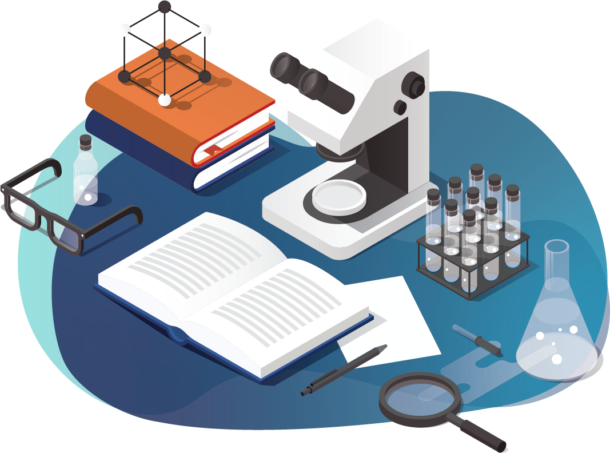I am often asked, “What IS EvolvingSTEM?”
Here’s how the conversation usually goes:
Me: “It’s based on a weeklong experiment with bacteria that demonstrates evolution in action.”
- Them: “For college classes, right?”
- Me: “No, for introductory and advanced high school biology”
- Them: “In the summer, in your lab, for a few students?”
- Me: “No, in the high school classroom, for everyone, during the regular school year”
- Them: “You must provide a ton of specialized equipment”
- Me: “Well, aside from pipettes and a vortexer, not really. It can be delivered in a box as a kit, provided the teacher has the opportunity to learn the protocol.”
In fact, we do also provide guest lectures to help link our program to the biomedical relevance of our experiment to the bacterial evolution that occurs during infections. The program is also effective in undergraduate teaching laboratories, community college microbiology classes, high-school vocational-technical biotech programs, and is robust to a range of class schedules. But EvolvingSTEM is designed expressly for the high school biology classroom.
So what is it?
It’s a laboratory, a comprehensive curriculum, and an authentic research experience. Students grow populations of bacteria in test tubes containing plastic beads, and by transferring these beads to new tubes selection favors those bacteria that best attach to the beads. This selects for mutants producing more biofilm that often form distinct colony morphologies.
Most importantly, it works. Students learn NGSS concepts about evolution, ecology, genetics, and structure and function better by doing these experiments than by conventional narrative learning. By setting out to design an experiment to teach perhaps the most challenging topic, evolution by natural selection, we’ve succeeded in teaching most of the other fundamental concepts in biology along the way. Plus, students learn important skills like sterile technique, fundamental microbiology, basic lab skills like pipetting and dilution, and and how to write a lab report.
Evolved colonies of P. fluorescens isolated by Pittsburgh high school students
- Them: “Wow, that sounds interesting, but it must take a lot of time and effort.”
- Us: “The evolution experiment takes as little as 1 week, Monday-Monday, for the students to see obvious changes. But we really encourage teachers to devote 2 weeks to enable a follow-up experiment enabling students to link the new colony morphology [picture] to a new function and understand they are heritable. Plus, this allows the students to compare their results, reflect upon them, and write a lab report.”
- Them: “How much does it cost? How do I learn more? Where do we start?”
- Us: “Consumable supplies cost us about $250 per class, plus the cost of equipment like pipettors and vortexes, and an incubator-shaker is nice. We can and have provided all of this to most schools, but we are working to make this sustainable by encouraging adopters to build this into their budget. We are also actively pursuing funding to enable this program on a broad scale.”
Why do we do it?
I direct a research laboratory at the University of Pittsburgh, School of Medicine, as Professor in the Department of Microbiology and Molecular Genetics. The goals of our laboratory are to understand and eventually predict the genetic adaptations that enable bacterial populations to colonize hosts, to interact with other microbes, and to initiate symbiosis or cause disease. We study evolution-in-action in bacterial populations growing in the laboratory, just like the EvolvingSTEM protocol, but also during human or animal infections. We use the latest genomic and bioinformatic tools to reveal the dynamics and molecular causes of adaptation. Currently, the lab is focused on defining and ultimately predicting the evolution of antimicrobial resistance in opportunistic pathogens.
The success of this research, and indeed all biomedical research, depends on a broad pipeline of motivated and curious students. Providing genuine research experiences is the best way to generate this motivation, but hands-on research opportunities in evolution have long been scarce or absent. We believe that developing a working understanding of how evolution works and how microbes can evolve quickly can inspire students to pursue careers in biotechnology.
Program history
The first time I saw changes in the frequency of red colonies and white colonies of E. coli occurring in real time, I thought, this has to be the way we should learn about evolution.
A plate of E. coli differing in ability to use arabinose, producing pink (+) red (-) colonies
That was 1995. Seven years later, as a postdoc at University of Michigan studying bacteria causing infections in the lungs of cystic fibrosis patients, I saw a bewildering number of colony types that had evolved during chronic infection.
Diverse colony morphologies from a Burkholderia cystic fibrosis pathogen
That observation led me to wonder if changes in the way the colonies appeared might be significant for treatment. The differences between the colonies related to their ability to produce biofilm or the amount of slime they were producing allowing them to stick to host tissue, plastic surfaces, or one another.
A few years later I started my own lab and we set to work studying these questions about how bacteria evolved during infections. We also began devising a way for high school students to learn about evolution by studying the same dynamics on their own in real time. At first, we worked with undergraduate students in the laboratory to test if changes in the frequencies of neutral markers (like the red and white E. coli types) could both teach us about the causes of adaptation and help students learn about evolution. But waiting for frequencies of markers to change required a lot of patience, and the payoff was difficult to explain. However, Ph.D. student Steffen Poltak wanted to design a method to follow and study evolution in biofilms — growth on surfaces — over several months, which hadn’t been done previously. We discussed putting various items in test tubes and selecting for bacteria that attached to them by producing biofilm, and soon Steffen found a supplier of 7mm polystyrene beads as part of an educational kit. He tested whether they were suitable — if they could survive autoclaving, could be transferred without contamination, and could select for biofilm production etc — and soon adopted them for our protocol.
Six months later, Steffen completed our first study of long-term evolution in biofilms with the cystic fibrosis pathogen Burkholderia cenocepacia, in which every population diversified into three different morphologies that represented growth in different niches.
Evolved B. cenocepacia mutants adapted to inhabit different aspects of the biofilm environment
A few years later, Ph.D. student Kenny Flynn conducted a similar study with another CF pathogen, Pseudomonas aeruginosa, again finding that biofilm populations evolved diverse colony types producing different amounts of biofilm to inhabit different niches.
In both cases, we found that the ways that these opportunistic pathogens evolved in our test-tube bead model strongly resembled how these pathogens evolved during biofilm-associated infections, meaning that we could study aspects of infection biology in test tubes.
However, neither of these opportunistic pathogens was suitable for use in a classroom to demonstrate rapid evolutionary change, so we tested another, safer species, Pseudomonas fluorescens, for our model. BS/MS student Taylor Warren tested whether a strain of this species could evolve and diversify rapidly enough to be suitable for a high school classroom. After a few trials with different media and growth conditions, the core “Evolution-in-Action” protocol with “Pflu” was born.
Finding partner teachers willing to test our program in the classroom was a challenge solved by serendipity. Winnacunnet High School Science Teacher Mike Handwork is a family friend and we got to talking about our program and his own restless tinkering with research opportunities in his classroom. He introduced us to his teaching partner Shani Scarponi at WHS and together they agreed to give our program a try in the 2013-2014 school year in their Introductory Honors Biology classes (9th grade). The results of that trial are now documented in our publication (https://evolution-outreach.biomedcentral.com/articles/10.1186/s12052-019-0103-4) and the program has continued to grow and produce new extensions each year, thanks to the creativity and efforts of student alumni in grades 10-12 who serve as teaching assistants through an Extended Learning Opportunity program. By teaching the program to freshmen, we can produce a broad base of experienced students to assist in subsequent years. Students also successfully applied for additional funding for equipment like autoclaves and incubator-shakers from booster organizations. Thus, EvolvingSTEM can help build infrastructure for science education of all kinds.
EvolvingSTEM today
Since launching at Winnacunnet in 2013, we have offered the program in 18 different high schools in 5 states as well as at many different state universities and colleges (see chart below). I moved to the University of Pittsburgh in 2015, making greater Pittsburgh our current area of growth and focus. In 2018-2019, we worked to improve sustainable adoption of our program by (1) increasing student participation in the experiment, which also reduces the time needed for teachers to prepare materials, (2) increasing the speed of bacterial adaptation, which allows classrooms to complete the experiment in 5 class periods, with one additional period needed to see their results, and (3) decreasing the amount of specialized equipment needed to complete the experiment. These modifications have allowed us to rapidly expand our school partnerships, from one Pittsburgh area high school in 2017 to seven in 2019, including two schools in the diverse Pittsburgh Public School District. In collaboration with science curriculum administrators, we hope to establish our program in general biology classrooms in all nine Pittsburgh Public High Schools within the next three years. We are working hard to acquire funding and support for continued growth and development of the curriculum materials. Our goals are to:
- Develop and manufacture or licenses kits for thousands of high school and college biology classes to enable learning, inquiry, and research of microbial evolution-in-action, which can be a yearlong experience
- Improve learning of NGSS HS-LS-1-4 (Evolution, Heredity, Structure/Function, Ecology) -Enable research on efficacy
- Train teachers in summer workshops to adopt the curriculum and/or to become peer-to-peer mentors
-Supports growth and sustainability - Provide online learning, credentialing and continued support to deliver our curriculum
- Motivate and support authentic student research projects that are biomedically relevant
- Train biotechnology methods, including genomic sequencing and bioinformatics
We believe the future of this program is incredibly bright. Please reach out to join us!









Recent Comments